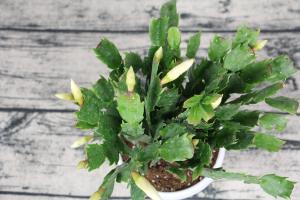Introduction
Tomatoes are a popular vegetable to grow in home gardens. They are relatively easy to grow and provide a tasty addition to meals. However, like any plant, tomatoes need certain nutrients to thrive. One nutrient that is often recommended for tomato plants is Epsom salt. In this article, we will discuss how much Epsom salt you should use when planting tomatoes.
What is Epsom Salt?
Epsom salt is actually magnesium sulfate, a naturally occurring mineral compound. It gets its name from the town of Epsom in England where it was first discovered. Epsom salt has been used for centuries as a natural remedy for a variety of ailments, including muscle aches and pains, constipation, and stress relief. In recent years, it has also gained popularity as a supplement for plants, particularly tomatoes.
Why Use Epsom Salt When Planting Tomatoes?
Epsom salt is a good source of magnesium, which is an essential nutrient for plant growth. Magnesium is an important component of chlorophyll, the substance that gives plants their green color and enables them to convert sunlight into energy through photosynthesis. Without enough magnesium, plants can become stunted, yellow, and weak. Tomatoes, in particular, require a lot of magnesium to produce healthy fruit.
In addition to providing magnesium, Epsom salt can also improve soil quality. It can loosen compacted soil and improve drainage, which can be beneficial for tomato plants that require well-draining soil to prevent root rot. Epsom salt can also make soil more acidic, which can be helpful for tomatoes that prefer slightly acidic soil.
How Much Epsom Salt to Use When Planting Tomatoes?
While Epsom salt can be beneficial for tomato plants, it is important not to overdo it. Using too much Epsom salt can actually harm your plants rather than help them. The recommended amount of Epsom salt to use when planting tomatoes is 1-2 tablespoons per hole or planting area.
When preparing to plant your tomatoes, sprinkle the recommended amount of Epsom salt in the bottom of the hole or planting area. Cover the Epsom salt with a thin layer of soil before placing your tomato plant in the hole. As your tomato plant grows, you can continue to feed it Epsom salt by mixing 1 tablespoon of Epsom salt into 1 gallon of water and giving your plants a good soak once a month.
Conclusion
Epsom salt can be a beneficial supplement for tomato plants, providing them with essential magnesium and improving soil quality. However, it is important not to use too much and follow the recommended amount of 1-2 tablespoons per hole or planting area. With the proper use of Epsom salt, you can give your tomato plants a healthy boost and enjoy a bountiful harvest.

 how many times do yo...
how many times do yo... how many planted tre...
how many planted tre... how many pine trees ...
how many pine trees ... how many pecan trees...
how many pecan trees... how many plants comp...
how many plants comp... how many plants can ...
how many plants can ... how many plants and ...
how many plants and ... how many pepper plan...
how many pepper plan...































